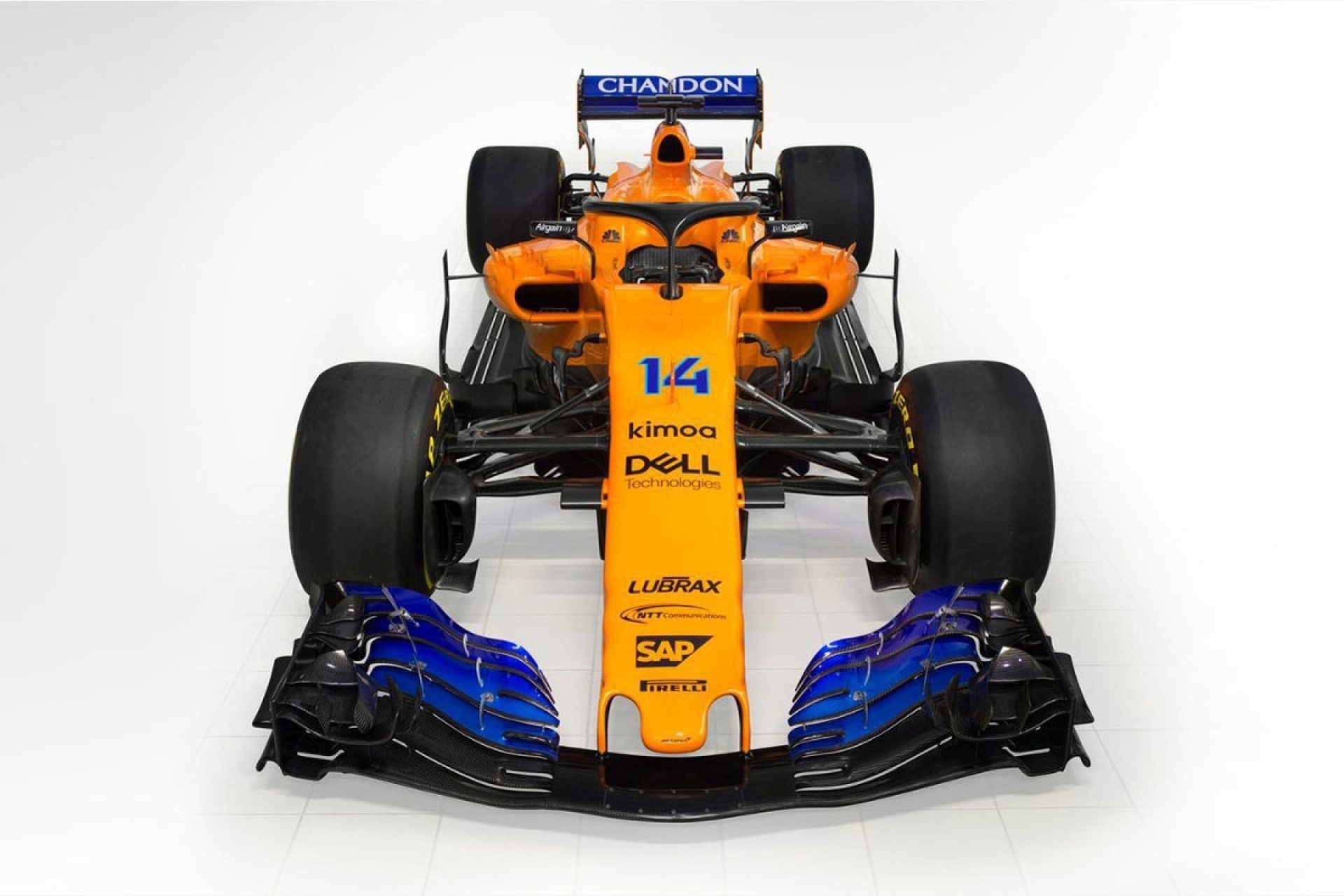McLaren marks the beginning of a new era by revealing its 2018 F1 contender, the MCL33.
This year’s chassis is a reset for the Woking-based team, marking the end of its Honda partnership. In its place, this year’s McLaren features a Renault power unit — a first in the team’s 52-year history.
The switch to Renault will come as a surprise to no one. Following a series of disappointments, McLaren divorced Honda as engine partner last September. In the time since the partnership began in 2015, the team has finished in the points less than 30 times.
McLaren Chief Technical Officer Tim Goss describes the change to Renault power as “a big deal”. Making the most of the new engine came with its own set of problems. The team redesigned several areas of the car to accommodate the French-built engine.
“We had to redesign the back of the chassis, the gearbox bell-housing area, the rear suspension, and the cooling layout. That was two weeks of intense effort to get right. But it was something we were somewhat prepared for, because we knew it might happen, and it’s amazing what people can do in such a short space of time when the chips are down and you’ve got a really clear mission.
“So now we’ve got a really tidy packaging solution; the gearbox and rear suspension designers did an unbelievable job to redesign everything.
“It’s a marker of the strength in depth of the department that it could incorporate such a fundamental change to the car so late into the design stage, and still deliver to plan.
“That’s because we’ve got a very tight-knit engineering group. There’s a very clear level of communication between us, so we could make quick and bold decisions, then just get on with it.”
The same engine will power the factory team’s R.S.18 and Red Bull’s RB14. Considering the Red Bull’s pace in 2017, the outlook for the MCL33 is positive. The car wears a different livery as well, mirroring that of McLaren’s first race in the sport 50 years ago.
As echoed through all reveals thus far, the MCL33 is an evolution of last year’s car. Much of the work put into this year’s car focused on the new engine unit and halo device. The end goal for the team is a simple one: a return to form.
It’s no secret the team has floundered in unfamiliar territory the past few seasons. That troubled Honda powerplant drove the team to a best place finish of sixth in 2017. While the team is hopeful history won’t repeat itself, it remains realistic of what lies ahead.
Racing Director Eric Boullier elaborates further:
“I think the whole team feels proud of this car.
“The design, engineering and aerodynamic departments have done an incredible job delivering a new car with a new power unit in an extremely short timeframe. We never took the easy route or looked to shortcut a process or a solution; and the result is a car that is neat and well-resolved.
“That said, we are under no illusions that it will be difficult to splinter the hegemony at the front; and that the midfield will be full of well-funded, experienced outfits with plenty to prove. We are humble about the challenge ahead, but feel we’ve prepared well, have a solid package that we can build upon and exploit as the season progresses, and have two excellent drivers who will make the difference in races.
“At McLaren, we are all racers – pure and simple. We’re going to come out pushing, and we’re going to be racing as hard as ever.”

Both Fernando Alonso and Stoffel Vandoorne remain onboard for 2018. It will be interesting to see what both men can get out of this year’s chassis. While we aren’t expecting race victories, finishing in the top ten shouldn’t be out of the question.
Pre-season testing kicks off next Monday at Circuit de Catalunya in Barcelona. The inaugural race of the 2018 season, the Australian Grand Prix, takes place March 26.
See more articles on F1 2018 Season, McLaren, and Pre-Season.


